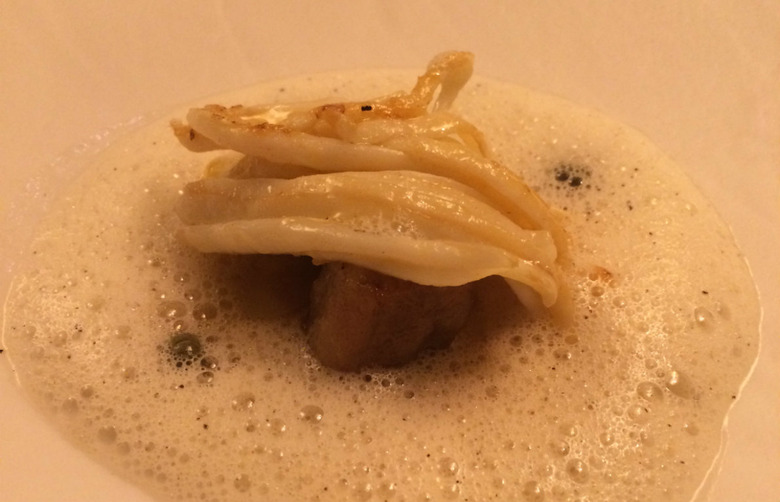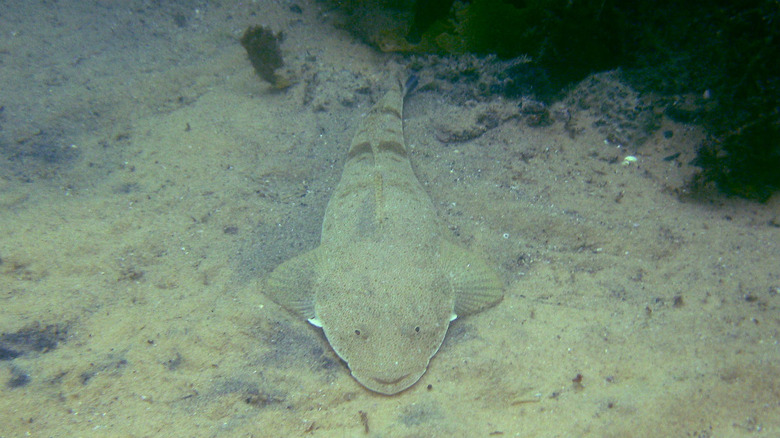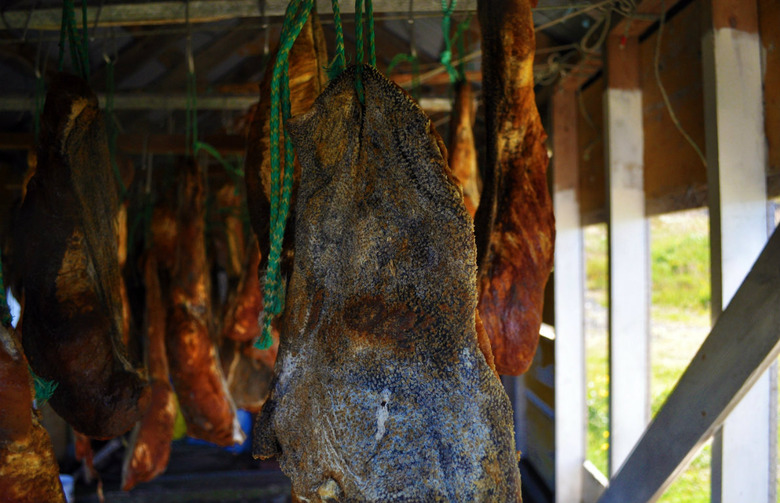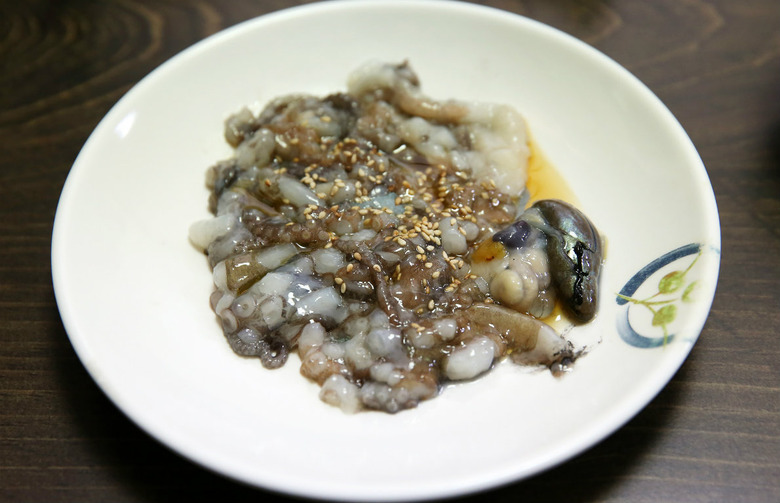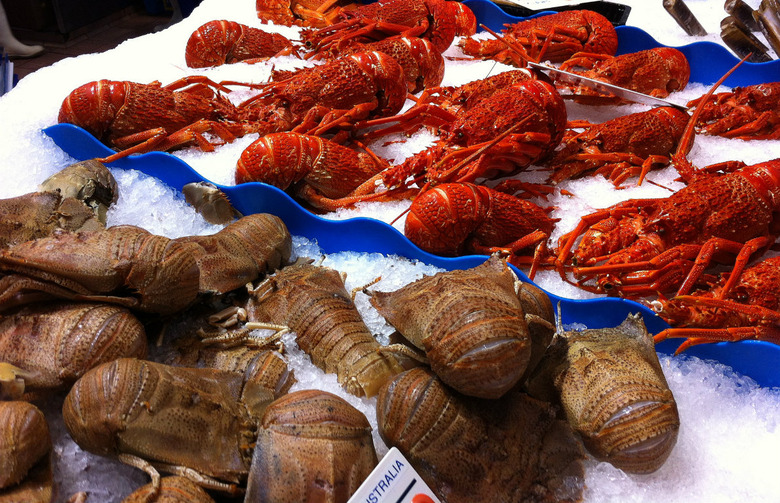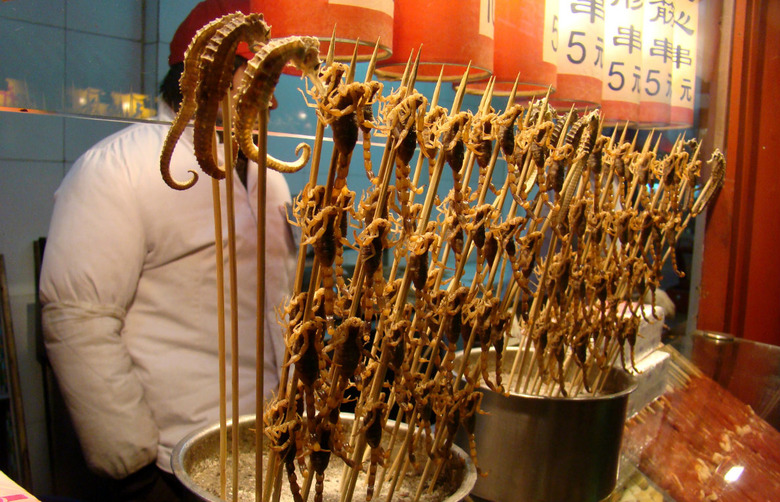Exotic Seafood You Have To Travel For (Slideshow)
Caught off the coast of Australia, barramundi is a fish popular in Australian dishes as well as in Indian, Thai, Vietnamese, and Malaysian cuisines. It has a sweet flavor, a white, buttery flesh, and a crispy skin. Recipes for barramundi are commonly prepared with garlic, lemon, shallots, or parsley, and the fish can be baked, broiled, steamed, poached, grilled, or deep-fried.
Espardenyes — Barcelona
These sea slugs, found only on the Catalan Coast, taste better than they look. Considered a delicacy in Spain, espardenyes have an earthy flavor unlike any other, tasting somewhere between monkfish and scallops, and are very expensive. They're commonly fried or prepared in tomato sauce. It's said that the slug is named after Espardenyes sandals because its striations resemble the pattern on the soles of the sandals and because it lies flat and shoe-like on the seafloor.
Flathead — Australia
Having two poisonous spines, flathead can be dangerous to catch and prepare. But eating the sweet fish is harmless. It's great for battering and deep-frying and is ideal for fish 'n chips. When whole, it can also be roasted or barbecued, and fillets can be poached, steamed, grilled, or eaten raw when fresh.
Gong-Gong — Southeast Asia
This type of sea snail is the most popularly eaten conch in Singapore and is also eaten in other areas of Southeast Asia like Batam. Gong-Gong is typically fried or steamed and dipped in chili sauce. After it's cooked, the meat is removed from the shell using a toothpick or by pulling it out by the tail.
Hakarl — Iceland
Considered the national dish of Iceland as well as one of the world's deadliest delicacies, Hakarl translates to "fermented shark," which is exactly what it is. Made with either Greenland shark or basking shark of the North Atlantic Ocean, the dish is foul-smelling with a very fishy and acquired taste.
It's traditionally prepared by first beheading and gutting the shark. Then, the carcass is buried in a hole covered with sand, stones, and gravel and left to decompose for two to three months. Once unburied, the flesh of the shark is cut into strips and hung to dry for four to five months before serving. The purpose of fermenting is to eliminate the shark's poisonous substances, trimethylamine oxide and uric acid.
The shark is traditionally served in cubes on toothpicks and paired with brennivin, an Icelandic alcoholic drink. It's generally un-liked by many of the world's renowned chefs like Anthony Bourdain, who called the dish "the single worst, most disgusting and terrible tasting thing" he had ever eaten.
Live Octopus — Korea
Eight-legged and squirmy, the octopus is a Korean delicacy that's eaten alive. It's believed that the live sea creature will build the strength and stamina of the person eating it. Koreans also like the sensation of the suction cups on the octopus' legs as they stick to their mouths. Chopped into pieces or wrapped around chopsticks and eaten whole, the octopus won't go down without a fight and can be deadly. Adventurous eaters should be careful when swallowing a live octopus as it's easy to choke on it. Its over 1,000 still-active suckers can stick to your mouth and its tongue and tentacles can get stuck between your teeth. The octopus may even try to climb back up your throat. To avoid choking, it's recommended to chew before swallowing.
Moreton Bay Bugs — Australia
While closely related to the rock lobster, the Moreton Bay bug is slightly sweeter and richer in flavor, and all of its meat is found in the tail. These bugs go well in cold dishes with other seafood and are best poached, steamed, barbecued, or grilled and then paired with light lemon mayonnaise, aioli, or dill vinaigrette.
Seahorse — China
In China, there's an old saying that goes, "Eating sea horses keeps that 80-year-old granddaddy young." Respecting this proverb, the Chinese enjoy seahorse — which has a squid-like consistency and is extremely salty — as an everyday food, often prepared whole in soups with pork and dates or eaten on a kebab. It's said that Emperor Tangminghuang, known as one of the most popular emperors of China, drank sea horse-infused liquor later in life. Be careful, though, when eating a seahorse because sharp pieces of it can get caught in your teeth and gums.

